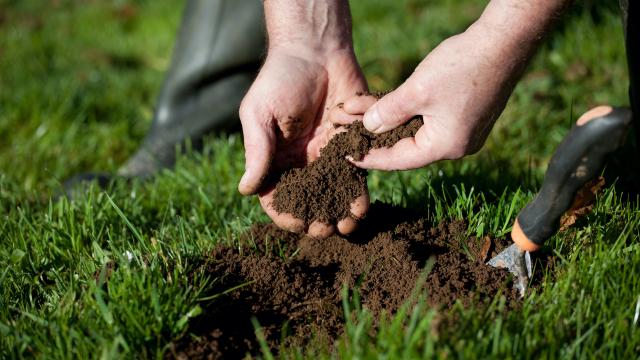When it comes to your plants, you can’t cheat. If you cut a corner, the results are gonna be felt in your garden: stressed plants that are susceptible to disease, produce less fruit, and fruit that tastes less awesome. To make sure they’re getting everything they need, from nutrients to water to fertilizer to sunlight and warmth, you just have to do the work. And there is no one singular plant input more important than soil. Every educated gardener will tell you to get your soil tested—and if you’re like me, you’ve avoided doing this because it seemed like a lot of effort and money. Let’s talk about the various ways you can get your soil right.
At-home testing offers limited information and imprecise results
The market is full of little testing kits that look just like the pool testing kit you remember your parents using to see whether the pool needed chlorine. I’ve tried many of these kits, and have found the results to be fuzzy, at best, but they’re good if you’ve got lots of places to test and are just dipping your toes into the process. Based on the results, you’ll know whether your garden needs more nitrogen, phosphorus, or potassium, and in some cases, you might learn what the PH of your soil is. This is important since some plants, like blueberries, have different needs from, say, tomatoes.
At-home soil testing kits:
- Luster Leaf Soil Kit, 20 tests: $US15.99
- Luster Leaf 1605 Digital Soil Kit, 25 tests: $US29.95
- Luster Leaf Products Professional Soil Test Kit: $US32.24
- LaMotte N-P-K Soil Test Kit: $US48.99
- LaMotte’s Gardener’s Soil Test Kit: $US89.00
- Lamotte Model El – Turf and Garden Soil Test Kit: $US110.49
This form of testing requires a lot of prep work, so prepare. Grab a series of disposable cups. They don’t have to be big—you don’t need more than eight ounces—but they do need to be clear. For each area of your garden, collect a sample, place it in the cup and then label the cup with where that sample came from. To the samples, add water, stir really well and then set the cups someplace to allow the dirt to settle. At this point, each cup gives you enough water to test for each of the elements, so go one by one and record the results. Take these results to your nursery, and they’ll help you decide what the best fertilizer option is, and how much of it to use.
Professional soil testing provides clearer results and an action plan—at a cost
The most that any home kit will tell you is some base information about the most common elements. What they won’t tell you is what trace minerals you need, and while that might not seem important, your tomatoes and peppers really depend on available calcium in the soil. Plants also need iron, manganese, zinc, copper, boron, and molybdenum, and the home tests won’t tell you about these. Professional tests will also tell you if there are heavy metals in the soil. At some point, you want to get your soil professionally tested.
The best place to find a testing location is your local extension office. If you’re not familiar with yours yet, this is the perfect excuse. Your extension office is the key to finding local master gardeners and whatever resources are available in your local area. You could tap into a wealth of local knowledge and tools. Find yours here. They’ll have information on where to get your soil tested, and the testing location will tell you what preparation they need, but generally, you collect soil (move the compost or other mulch aside and pull from up to eight inches deep) from a few different locations, homogenize the sample, and then sift it. A hori hori is a good tool to get a vertical slice of soil, rather than just a scoop off the top, but you can also buy a soil probe that is designed for just this purpose. Then just follow directions to send in your sample to the lab.
What to do with the results of your soil test
Your local nursery or farm store can help you understand the results you get—they’ll be able to tell you precisely what amendments you need to correct your soil. However, to get a basic understanding, rather than a numerical score, you’ll see the results are represented by “yes,” “no” and “maybe.” Yes, amendments will increase yield, no, amendments won’t increase yield, or maybe, amendments might increase yield. They’ll give you this information for a long list of nutrients including the elements mention above. While it may seem like these elements exist in a vacuum, they interact with each other to produce what your plant needs. For instance, while calcium is incredibly important, your tomatoes can’t uptake calcium if they’re deficient in phosphorus.

Leave a Reply
You must be logged in to post a comment.